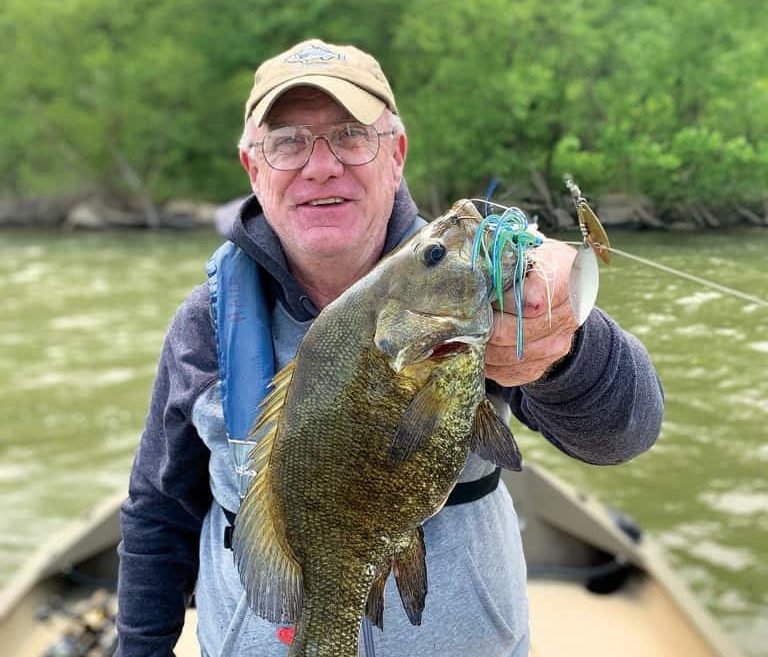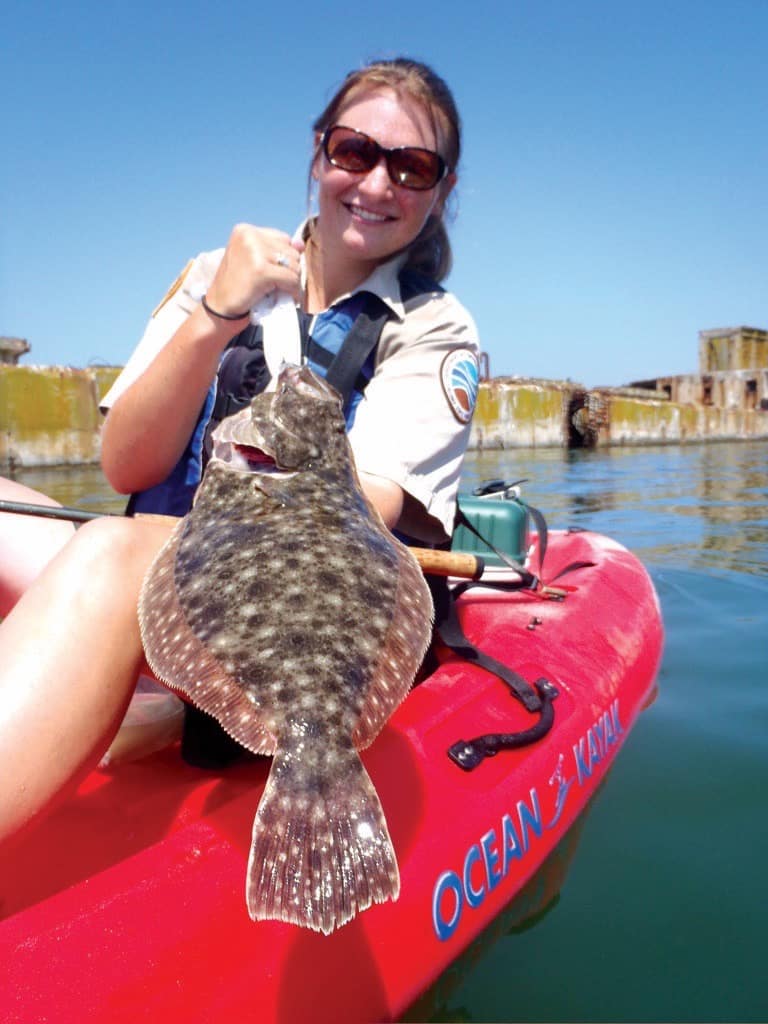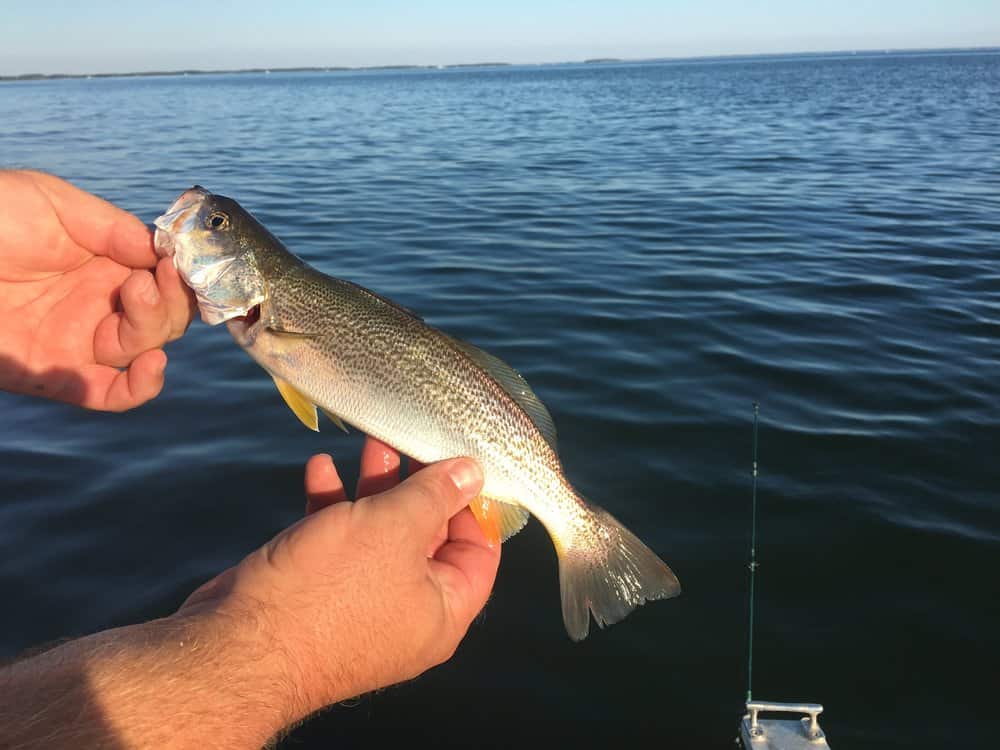Wherein we explore the pursuit of a feisty freshwater sunfish.
The clogged arteries of the D.C. Capital Beltway never fail to drive me to insanity. Not too far from this spaghetti of snarling traffic, however, sits the prime smallmouth bass waters of the Potomac River and its feeder waterways, which offer exceptional fishing and quiet solitude.
Years ago, near a small town whose name I’ve forgotten, two good friends and I entered a section of the Shenandoah River to begin a three-day float. I was in the business end of a canoe, and my childhood buddy was perched up front while our third angler was alone in a kayak.
When I say perched, what I mean is he was trying to steady himself but looking more like a drunkard dancing on a three-legged stool at last call. I thought age had eroded his balance. And he spilled tail over teacup into the drink a mere ten minutes into the trip. My kayak friend sidled up to ask with a tinge of concern, “Is your buddy gonna be alright?”
“Hope so,” I replied. “At any rate, he’s wearing a life vest, so at least he’ll be easy to find.” There were several other tales from the trip that are more suitable for another time and place. I recall it as a less dark, PG-rated version of James Dickey’s Deliverance. Cue the banjo.
Once the wayward angler was safely back in the canoe, we flowed gently downstream while casting to likely spots for smallmouths, or whatever fish would hit a fly. The weight of the world melted away, and the sun’s rays exploded across the purple horizon like radiant apricots. I caught glimpses of frolicking river otters. Siblings, perhaps? Kingfishers abounded. Herons stalked prey. On a river, there is always something interesting going on. All you have to do is look around.
By some anglers’ standards, our fishing excursion was far from a booming success. We caught about a dozen fish, only four of which were bass, though one was a three-pounder.
Here’s the thing: If we only fished to gain the approval of others and to keep score, it’d be a mighty shallow life. I value such adventures far more for the rich memories created than numbers of fish caught.
Writing this piece has spawned pangs of regret for not exploring the upper tributaries of the Chesapeake watershed as much as I should. Too much to experience for one lifetime, perhaps, but I should try. Oh, and if you do hear banjo music, kick up your paddle stroke a few notches.
Don’t Let the Name Fool You
Smallmouth bass go by several nicknames—smallies, bronzebacks, brownies, and brown bass—depending on what part of the country you come from. I went down a bit of rabbit hole while researching the origin of the smallmouth name. As near I can figure, the prefix refers to the fact that the rear end of the lower jaw doesn’t extend past the eye, whereas the jaw on a largemouth
bass does.
While a three-pound fish might not spark much excitement from a jaded Chesapeake saltwater angler, those three pounds pinned to a fish hook, will make up an old fashioned throw down. Ornery and tough, smallmouth bass don’t back down, and they can hit with the ferocity of a Mike Tyson haymaker. They leap and spin as they try to throw the hook. By any angling standard, pound-for- pound, smallmouth bass offer a formidable fight.
Where to Fish
When trout streams start to get too warm, fishing for smallies often heats up. They do best in clean, cold rivers where an abundance of insects, baitfish, and crayfish make easy meals.
Popular smallmouth stretches include waters above and below Harper’s Ferry on the Potomac; the North and South Forks of the Shenandoah; the Monocacy, and the tributaries that flow into them. I’ve mentally mapped-out an early fall trip on the Rappahannock, near Fredericksburg, where the Rapidan River drains into the larger river, and, from what I hear, it’s a good spot to find them.
The Bay’s mother river, the Susquehanna, offers exceptional smallmouth angling. Kayla Haile lives in Pennsylvania, where she fishes for smallmouth bass every chance she gets. She says she owes her love for fishing, and especially the Susquehanna River, to her father Lee Haile.
“When I was a little girl fishing with my dad in the Susquehanna for stripers, we’d occasionally catch a smallmouth, always a fun fish to catch,” she told me recently. “I’ve really fallen in love with catch-and-release for smallmouth bass. I still have so much to learn, and that’s what makes it so enjoyable to me.”
She’s learning to “read the river” from Harrisburg all the way south below the Holtwood Dam near Lancaster.
“This entire stretch of river allows for different types of techniques due to how it flows,” she adds. “The river cuts through mountains and rock formations, [providing] breathtaking views. Something about being on the river is relaxing. I leave my worries on the back burner while I’m out there.”
Paddle Power
Many anglers use water jet outboards to cruise larger sections of smallmouth bass rivers due to the rocks, which can wreck a conventional propeller. I prefer a kayak or a canoe when river fishing. Some experts and guides prefer drift-boats. Paddle-powered vessels go easy on the environment; the only carbon footprint I leave behind is the smoke trailing from a Macanudo cigar. Moreover, targeting smallies from a canoe or kayak affords the advantage of getting into narrow and skinny waters, which are usually less pressured. Fishing more remote waters can heighten the angling experience.
Lure or Fly? Why Choose, Fish Both
It doesn’t matter what species you target, the debate about what lures or flies catch best is never-ending. For bronzebacks, shallow-running, wobbly crankbaits can be particularly effective, especially when trolled around weed flats and shorelines. This technique is also good for exploring new water, searching for fish. In deeper waters, switch to a medium or deep-diving bait.
I’m a big fan of spinnerbaits. I’ve found them to be excellent all-round lures when casting to many species. They are fairly weedless and snag-free, so cast them into anything except the heaviest vegetation.
As for flies, effective surface patterns include grasshopper, dragonfly, and damselfly imitations; and standard streamer patterns such as woolly-buggers and Clouser minnows.
The best bait colors depend on what river or section of river you’re fishing. I’ve had good luck with neutral to dark colors and chartreuse.
Recommended Outfits
When fishing heavier lures into cover (aquatic vegetation, fallen timber, stumps) or around structure (rocks, docks and bridge pilings) smallmouth anglers tend to use medium-heavy to heavy-power baitcasting outfits loaded with at least 25-pound monofilament line, with many opting for braided line from 20- to even 40-pound test. I typically use a seven-foot, medium-power spinning rod matched to a 4000 series reel line spooled with 20-pound Berkley Superline, a dependable braided multifilament polyethylene line.




